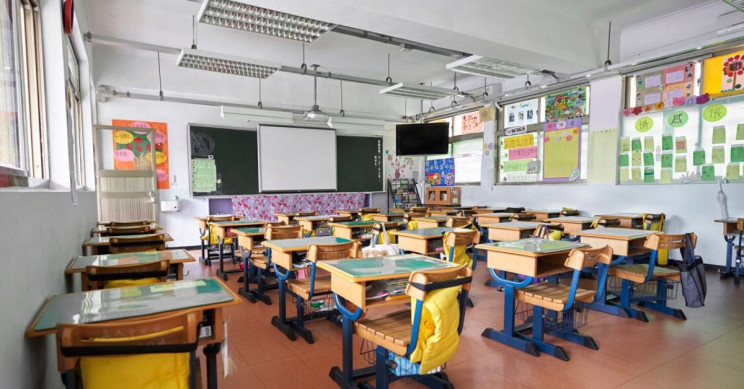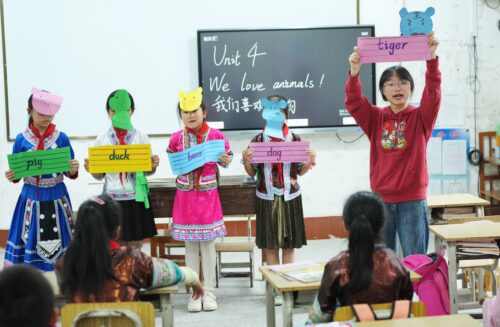Educational equality in China: How online learning during coronavirus has changed the status quo

For perhaps the first time, all students in China — rich and poor, urban and rural — have equal access to classes with the most experienced and best-trained teachers. All it took to make it happen was an epidemic.

Much of China is currently in lockdown due to the COVID-19 coronavirus. In urban centers, streets are empty and many businesses remain closed. Subways and buses are shuttered or running on limited service. The most visibly functioning public places are supermarkets, but even those lack their usual hustle and bustle. Schools are also closed — but that doesn’t mean learning has stopped.
During this period, educators are doing what they do best: making use of the time and resources available. Public schools across China have been ordered by the Ministry of Education to suspend the spring semester, but, as they put it, tíngkè bù tíngxué 停课不停学 — stop classes but don’t stop learning.
This has had an interesting consequence: The Chinese education system, which has been notoriously riddled with inequality, has seen a convergence of access to learning resources for all of the country’s students. For the past two decades, wealthier, urban students have enjoyed the lion’s share of resources in the form of better-funded public schools and access to a highly competitive industry of private prep centers. Today, fissures between urban and rural students, between rich and poor, have suddenly narrowed as China’s 260 million students take their studies online.
The 300-plus high school students I teach in Shaanxi Province, for instance, are taking full days (7:30 a.m. to 6:15 p.m.) of classes online. This includes indoor exercises for physical education and even the daily eye massage exercises that students do in the Chinese public school system. For me, in addition to college counseling, I also teach ACT Writing to about 100 students (now online). Teaching online has proved difficult for some, especially foreign teachers who were required to suddenly master multiple software platforms entirely in Chinese, but most have gotten the hang of it.
There are problems, of course. At the top of my list are technical issues, which can be, quite frankly, a pain in the ass. Slow internet and poor audio/visual equipment means questions need to be repeated before they can be answered. Other challenges include getting students to not leave their devices: I try to require all students to answer questions during the online session — at least this way, I can distinguish which students are participating and which are not. With only basic conferencing software, it is nearly impossible to efficiently check understanding and force accountability on so many students — typically 30 to 70 per class at the high school level. It is too easy for students to hide in the comparative anonymity.
As education has moved from schools into homes, parents have also been affected. Most obvious is that the responsibility for disciplining misbehavior has shifted from teachers onto parents. As a result, many parents are struggling because they never had to manage their children’s schoolwork beyond missed homework assignments. Now they must ensure punctuality and participation, making sure their children aren’t distracted by computer games, simultaneously completing homework for other classes, or streaming the Avengers film series. Many parents have struggled to adapt to their new role as full-time teacher’s assistant.
But at least all households across China are facing the same challenges. Online teaching has been a great equalizer for millions of students. With the rise of online learning in the wake of the coronavirus, the quality of education now depends less on teacher quality, teaching equipment, or other school resources. All learning is happening in students’ homes, and only their homes.
In Shaanxi, under the “stop classes but don’t stop learning” initiative, national curriculum classes are being recorded by expert teachers across all grade levels, which are broadcast on TV free for everyone. Technically, for the first time ever, all students — rich and poor, urban and rural — have equal access to classes with the most experienced and best-trained teachers.
Most of all, learning now depends almost exclusively on the students and their families. If a student works hard or is well-managed by their parents, that student can more or less maintain the same achievement as with offline teaching. However, if a student does not participate, they will quickly fall behind, more quickly now than ever before.
So are we actually closer to educational equality in China? On the one hand, the impact of socioeconomic and regional factors that once greatly influenced a student’s education have been temporarily lessened. But has COVID-19 truly democratized education in China? Of course not. Internet access, family demographics, student learning styles, and other factors are still affecting the quality of education.
Still, if schools remain closed even next month, education bureaus may be forced to think longer term about incorporating online learning into their curriculums. There’s a chance, then, that the benefits from a more democratized and equal education system might continue even after this coronavirus epidemic passes. In the meantime, a big step in online education has brought us a small step closer to educational equality.
Special thanks to Jin Zhou 周瑾 for assistance and research for this article.





